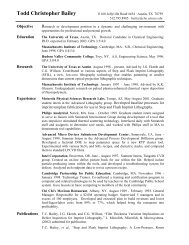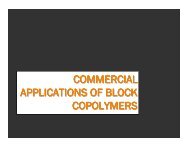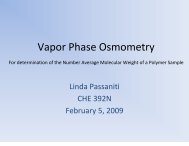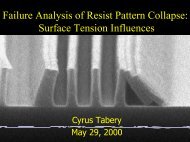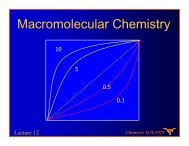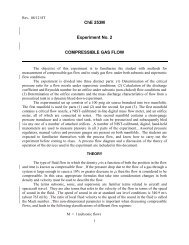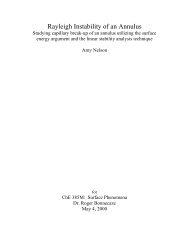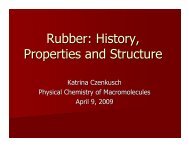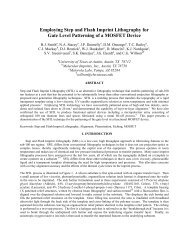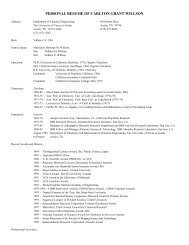Asymmetric fluid-structure dynamics in nanoscale imprint lithography
Asymmetric fluid-structure dynamics in nanoscale imprint lithography
Asymmetric fluid-structure dynamics in nanoscale imprint lithography
- No tags were found...
Create successful ePaper yourself
Turn your PDF publications into a flip-book with our unique Google optimized e-Paper software.
500045004000film thickness, nm350030002500200015000 0.5 1 1.5time, sFigure 6.11 Film thickness dur<strong>in</strong>g squeez<strong>in</strong>g with five micron of downwardactuation. Spectrometer probe 1 (circles) and probe 2 (squares)6.4.3 Experiments with Filtered WaterIt was determ<strong>in</strong>ed that particle contam<strong>in</strong>ation <strong>in</strong> the <strong>fluid</strong> may be a factor<strong>in</strong> the m<strong>in</strong>imum possible gap height that could be achieved. The water used <strong>in</strong> thecurrent set of results was filtered through a 0.02-micron filter. The filter removesparticles that are larger than 20 nm from the water. For th<strong>in</strong> base layers, the datashown <strong>in</strong> Figure 6.12 represents the best set of data obta<strong>in</strong>ed over the course ofthe experiments. It was shown that the gap heights achieved after filter<strong>in</strong>g thewater (Figure 6.12) was appreciably smaller than for unfiltered water (Figure6.10). Unfortunately, perform<strong>in</strong>g the experiments with filtered water poses thesame problem as unfiltered water when the particles are <strong>in</strong>troduced by thehandl<strong>in</strong>g of the substrate and template.92



